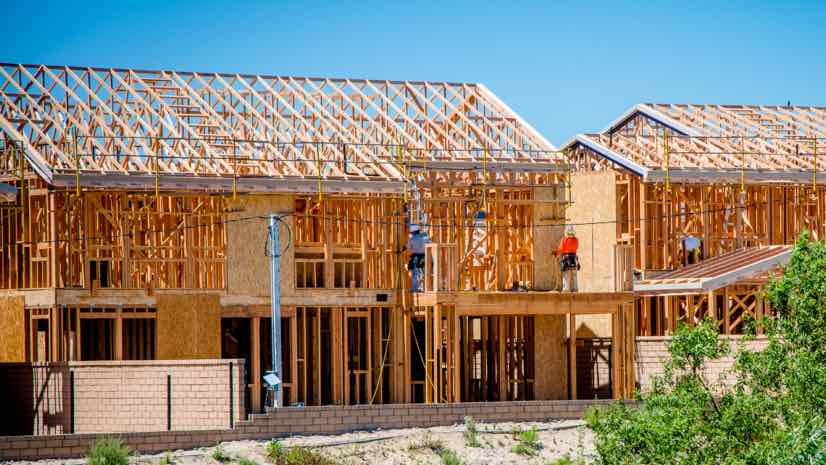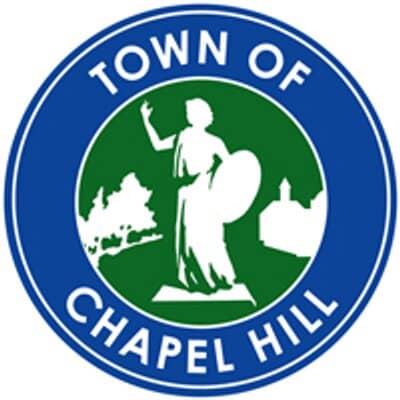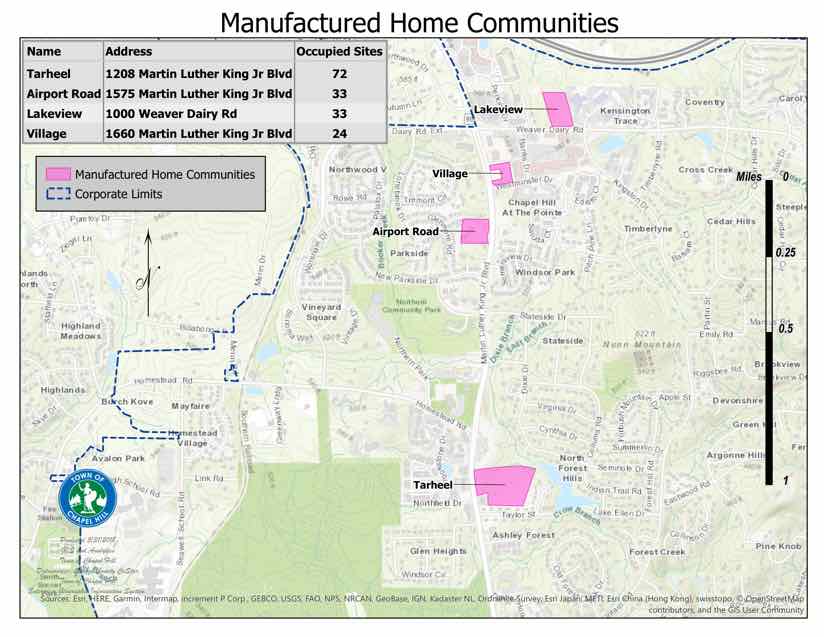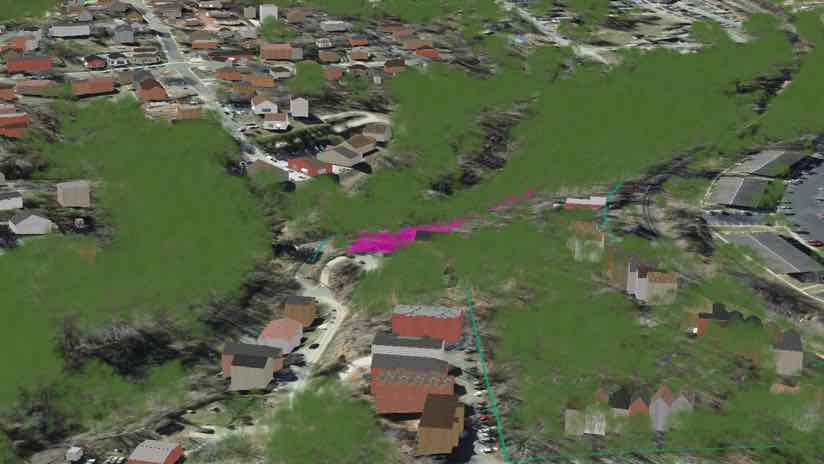

This affordable housing project has very real consequences for the economically vulnerable residents in a town where the average home price is $330,000.
February 5, 2019

In 2017, the residents and families living in a 33-unit mobile home park in Chapel Hill, North Carolina, received news from the property owner that within a year they would have to relocate so the property could be redeveloped. After the tight-knit community made an impassioned plea for help, the Chapel Hill Town Council mobilized a small team of Town employees to explore affordable housing options.
“About 90% of the residents in our mobile home communities are Latino, primarily Spanish speaking, from low-income households. Many residents are long-standing members of our community,” explains Sarah Viñas, Assistant Director, Office for Housing and Community, Town of Chapel Hill. “The town is really committed to have housing options available to these and all of our residents.”
Going back several decades, the Town of Chapel Hill deployed a land-use strategy mandating specific areas for urban development and others for preservation. The rural buffer prevents development on town outskirts and limits growth, which in turn reduces the amount of available land and increases land costs—presenting a challenge for the Town’s Office for Housing and Community.
“The initiative to identify opportunities for affordable housing was uncharted territory for the Town’s GIS team. There are only four mobile home communities in town and they’re all in relatively high-value commercial areas,” says Dave Almond, Senior GIS Analyst in the Department of Technology Solutions, Town of Chapel Hill.

Maps and Community Feedback
Town staff began by reaching out to the mobile home park residents at meetings and conducting surveys to learn more about who they are, their household demographics, and their housing preferences. The desire was to craft solutions based on specific needs.
After Viñas and her team connected with all the mobile home park residents in Chapel Hill, they realized a mobile home was one of their least preferred housing types for relocation.
“We’ve been really committed to the resident engagement piece, starting with what residents say they want and designing strategies around it,” Viñas says. “As a town, we’ve been really intentional about our approach to listen and get feedback so we don’t create solutions that in the end, may or may not work for people.”
Viñas’ department then worked collaboratively with Almond who analyzed and mapped available Town-owned land for relocation using the town’s geographic information system (GIS). Almond created a comprehensive visualization of properties, including amenities near potential sites.
After Almond did an initial series of suitability analyses for candidate properties, he created high-quality 3D scenes, derived from 2D operational data, and shared them online to gather staff feedback.
The immersive 3D maps helped staff visualize properties and possibilities. “I wanted to go as far as I could to accurately represent in the 3D space absolute constraints to development. Deriving site characteristics such as slopes, existing structures, and vegetation from high accuracy LiDAR data allowed us to create spatially accurate 3D scenarios,” Almond explains.
The 3D site models helped the team collect design criteria from technical reviewers including engineers, transit and public safety officials, and Town planners. Each reviewer could comment on potential sites in terms of deficiencies or specific needs for regulation and development, enabling Almond to refine the 3D concept scenarios.

Benefits of Visual Data
For Viñas, a data visualization provided some surprising insights, including the integration of affordable housing throughout the town. “Our affordable housing is spread throughout the community, and not concentrating low-income people in specific neighborhoods is really best practice in the field,” Viñas says. “So, seeing the data mapped was really striking. There’s a lot of benefits for neighborhoods to be diverse in terms of income, race, and other demographic factors.”
For residents facing relocation, maps showed amenities located near potential sites as well as upcoming and recent developments near the mobile home park. Viñas says the residents “really reacted to that” as they hadn’t understood all of the development unfolding around them.
“We weren’t quite sure when we put that together if people would make the connection and if it would be clear,” Viñas says. “I think it was pretty neat to see the real-life use of some of these mapping tools, which sometimes can feel difficult to understand.”
According to Viñas, the maps created by Almond and the GIS team are essential for the Chapel Hill Town Council. Quarterly reports on affordable housing presented to the Council include a heat map of affordable housing in Chapel Hill.
“The visualization tools were really helpful for an understanding of the broader context of the issue,” Viñas says.
While the developer poised to redevelop the mobile home community that triggered this investigation later withdrew the proposal, the mapping explorations spurred by this activity have informed the Town’s efforts to identify suitable sites for affordable housing development.

This affordable housing project has very real consequences for the economically vulnerable residents in a town where the average home price is $330,000.
Looking to the Future
The majority of Chapel Hill residents (72%) approved an Affordable Housing Bond Referendum in November 2018 which included $10 million to help support the development of 400 new affordable housing units and preservation of 300 existing affordable units over the next five years. The bond will fund and support several large-scale affordable housing projects, including public housing redevelopment and development on town-owned parcels.
“Initially, the interest was a public intervention for this specific community, looking for just one property that could house the 33 units needed,” Almond says. “The bond provides the Town with the resources to pursue potential affordable housing development that would serve mobile home park and other low-income residents on Town land that the Town Council has prioritized for this purpose. So, I didn’t expect the outcome; it was a wonderful surprise for our team and the deserving residents.”

This particular initiative sparked more than just discussion of the future of affordable housing in Chapel Hill; it inspired renewed focus among town leaders. The Office for Housing and Community is working on a partnership with the University of North Carolina at Chapel Hill on the Building Integrated Communities (BIC) project.
BIC is a multi-year community planning process that helps local governments in North Carolina engage with local foreign-born, refugee, and Hispanic and Latino residents in order to improve relationships, enhance communication, and promote civic participation and leadership.
One aspect of BIC is looking at mobile home parks both in and in the immediate vicinity of Chapel Hill to see how far residents live from public transportation that they rely on to travel to and from work, school, and other critical services.
“I’ve been working on affordable housing at various levels and this helps complete the picture for me,” Almond explains. “Now, it expands to the outside of town and incorporates transit.”
Almond says he’s gained a solid understanding of affordable housing, and as a GIS analyst, he wants to use GIS technology and analytics to help arrive at practical solutions that help people.
“Chapel Hill is only about 57,000 people. There’s under 700 employees for the town government and I’m one of three GIS analysts,” Almond says. “So, we really have to champion the analytical capabilities of GIS because most people may not understand what’s possible.”
To learn more about Chapel Hill’s affordable housing, visit www.chapelhillaffordablehousing.org. Affordable Housing is one of many topics addressed on the Esri Maps for Public Policy site. Visit this resource to see how maps and spatial data help leaders make more data-driven decisions.


